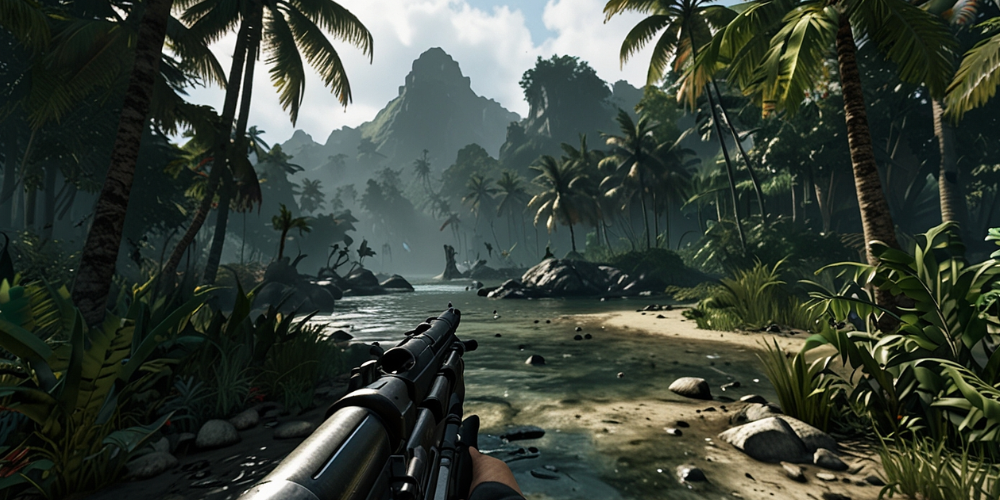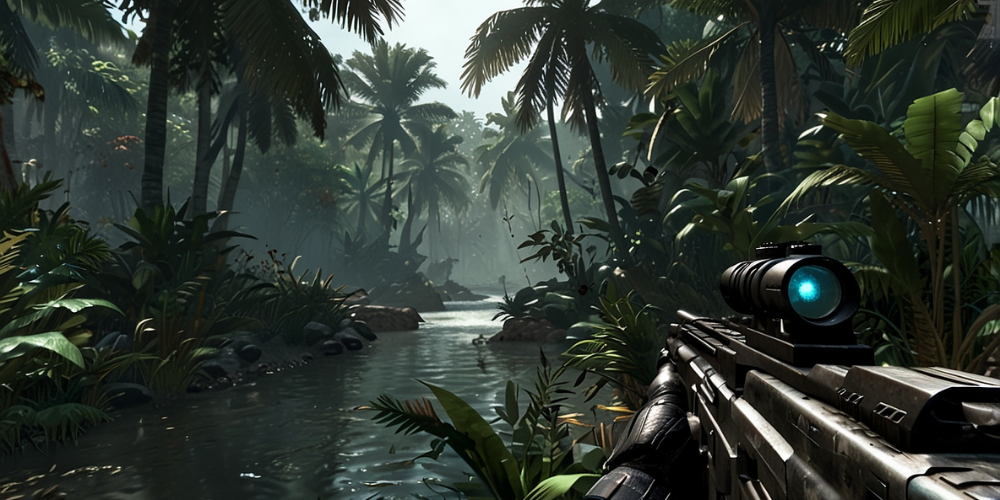The Technological Advancements in Crysis: Graphics, Physics, and Innovation
- Oct 27, 2024
- 706

Crysis has long been a benchmark for video game graphics, and its release in 2007 marked a turning point in the technological capabilities of video games. Known for pushing hardware to its limits, Crysis set a new standard for visual fidelity, physics simulation, and environmental interactivity. The question, Can it run Crysis? became a meme among gamers, reflecting just how advanced the game’s requirements were at the time. For me, Crysis wasn’t just a visually impressive game—it was a technological showcase that highlighted the future of gaming and set the bar for what was possible in terms of graphical and technical advancements.
Advanced Graphics Engine
At the heart of Crysis’s technological achievements is the CryEngine, a graphics engine developed by Crytek that was designed to deliver cutting-edge visuals and performance. The engine was capable of rendering highly detailed environments, dynamic lighting, realistic shadows, and complex particle effects. It also supported large open-world areas filled with dense foliage, destructible environments, and realistic water simulations. For me, the CryEngine was one of the most impressive aspects of Crysis, as it allowed for an unprecedented level of detail and realism in the game’s visuals, making it feel ahead of its time.
Real-Time Physics and Destruction
One of the most innovative features of Crysis was its use of real-time physics and destructible environments. The game allowed me to interact with the world in ways that few other games had before. Trees could be shot down, buildings could be destroyed, and debris reacted realistically to explosions. This level of environmental interactivity added a new layer of immersion, as the world around me felt dynamic and responsive to my actions. For me, the real-time physics in Crysis made the game feel more alive, as every firefight had consequences that could change the environment in unpredictable ways.
Dynamic Lighting and Shadows
Crysis was among the pioneering games to incorporate entirely dynamic lighting and shadow effects, delivering an unprecedented level of realism during its release. The game’s lighting system allowed for realistic day and night cycles, with the position of the sun affecting the direction and length of shadows. The interplay between light and shadow added depth to the game’s environments, whether I was sneaking through the jungle at dusk or engaging in combat under the bright midday sun. For me, the dynamic lighting in Crysis was a key part of what made the game so visually striking, as it created a world that felt truly alive and ever-changing.

AI and Enemy Behavior
In addition to its graphical advancements, Crysis featured sophisticated enemy AI that adapted to my tactics and responded dynamically to the environment. Enemies would take cover, flank my position, and use the terrain to their advantage, creating challenging and unpredictable encounters. The AI was also responsive to sound and sight, meaning that stealth and strategy played a crucial role in avoiding detection and outsmarting enemies.
Open-World Exploration
Unlike many first-person shooters of its time, Crysis offered a semi-open world that encouraged exploration and experimentation. The game’s levels were large and open-ended, allowing me to choose how to approach objectives, whether by stealth, direct combat, or using the environment to my advantage. The freedom to explore the lush jungles and coastal areas of the game’s setting made the world feel expansive and immersive. For me, the open-world design of Crysis was a refreshing change from the linear shooters of its era, offering a sense of freedom and agency that enhanced the overall experience.
Nanosuit and Tactical Gameplay
One of the most iconic features of Crysis was the Nanosuit, a high-tech piece of equipment that gave me superhuman abilities. The Nanosuit allowed me to switch between different modes, such as enhanced strength, speed, and cloaking, giving me the flexibility to adapt to different combat scenarios. The suit’s tactical options encouraged me to think strategically, whether I wanted to engage in direct combat, sneak past enemies, or use my surroundings to gain an advantage. For me, the Nanosuit was a game-changer, adding a unique layer of tactical gameplay that set Crysis apart from other shooters.
Realistic Environmental Interactions
Crysis’s environment wasn’t just visually impressive—it was also interactive in ways that felt ahead of its time. The game’s application of physics went beyond mere destruction, enabling realistic interactions with objects within the environment. I could use foliage for cover, knock down trees to create obstacles, and even manipulate the environment to outsmart enemies. The game’s attention to environmental detail made each encounter feel dynamic and immersive, as I could use the world around me to my advantage. For me, the realistic environmental interactions in Crysis added depth to the gameplay, making every action feel meaningful.

High System Requirements and the Crysis Meme
When Crysis was released, its system requirements were notoriously high, leading to the popular phrase, Can it run Crysis? Many players found that their PCs struggled to run the game at its highest settings, and it became a benchmark for testing the power of gaming hardware. This technical challenge added to the game’s mystique, as Crysis was seen as a glimpse into the future of gaming graphics. For me, the high system requirements of Crysis were both a point of fascination and frustration, as it pushed the limits of what was possible with gaming technology at the time.
Modding and Community Support
Another key aspect of Crysis’s legacy is its active modding community. The CryEngine allowed for extensive modding, and players quickly took advantage of the game’s advanced technology to create new content, from custom levels to total conversions. The modding community helped extend the lifespan of Crysis, as new mods and updates continued to push the game’s technical limits and offer fresh experiences. For me, the modding support in Crysis was a testament to the game’s flexibility and the passion of its fanbase, as it allowed players to experiment with the game’s tools and create new content.
The Legacy of Crysis
Crysis has left a lasting legacy in the gaming industry, not just for its groundbreaking graphics, but also for its innovative approach to gameplay, AI, and environmental interaction. The game set a new standard for what was possible in video games, influencing both the development of future titles and the evolution of gaming hardware. For me, Crysis remains a landmark in gaming history, a game that challenged both players and developers to think bigger and push the boundaries of what video games could achieve. Its legacy continues to inspire games that prioritize technical innovation and immersive gameplay.